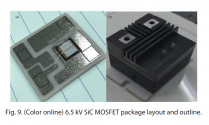If I'm SMIC, I would try to get into the smartphone market as soon as I can, because that's where the money is. In fact, I don't know why they would build so many new "28 nm fabs" with high production capacity if they weren't trying to get into the more competitive smartphone market. If I'm SMIC, I would let other chip makers take over the lower end market.
Instead if I'm China I would leave the smartphones chips as the last ones
1. In order of strategic importance we have AI chips, server chips, desktop chips and only at the end smartphone chips
2 In order of needed manufacturing capacity instead the list is exactly reversed. It means that is enough a small capacity to fully localize the highly strategical AI, instead the same capacity is just a drop in the ocean for smartphones.
3. AI is a key enabler for China's high-tech ecosystem like for instance future EV cars, the big market of the future, that is going to complete change the current status quo and power balance and where China is even ahead of western competition! I think one of the main reasons for US to ban AI chips is to hinder China on autonomous car, an absolute must-have key technology of our near future!
3. Smartphone chips have no strategic value at all, they are just a revenue cow, but are not enablers of anything, there isn't a secondary high-tech new market that is affected by smartphone chips availability.
4. The fact that US companies make a lot of money on smartphone chips (Qualcomm) or on desktop / server chips (Intel, AMD) in China market is not bad for China from a strategic point of view, indeed is a kind of life insurance for China in this period. It ensures there is a very strong and deep pocketed pro-China lobbying in US and this has paid off already, see the delays of the half-effective and partial US measures. I mean, currently Intel is still selling tons of chips to Huawei, I mean to Huawei!!!
Keeping buy US chips, China is indirectly paying billions of $ to water down US policies. It works nicely!
Last edited:

